Understanding the New Era of Diabetes Diagnosis
Diabetes mellitus, a chronic condition that disrupts the body’s ability to regulate blood glucose, remains one of the most significant global health challenges. As prevalence rates continue to rise, innovations in testing and diagnostic accuracy are taking center stage. Historically, the detection of diabetes relied on fasting glucose and symptomatic presentation. Today, however, the medical diagnosis of diabetes has advanced through a combination of laboratory-based precision and technological accessibility. Understanding how diabetes is diagnosed in modern practice requires a detailed look at both the traditional and breakthrough tools now available to clinicians.
You may also like: Breakthroughs in Current Diabetes Research: What the Latest Studies Reveal Ab
In particular, A1C testing has emerged as a critical marker, offering insights into average blood glucose levels over time. Alongside this, advances in the interpretation of blood sugar values for diabetes have deepened our understanding of disease progression and management. As healthcare systems strive to provide early and accurate diagnoses, new diagnostic tools are redefining what it means to detect diabetes at its earliest, most treatable stage. In this comprehensive exploration, we uncover what these tests reveal, how doctors test for diabetes with greater precision, and why these developments hold transformative promise for millions worldwide.
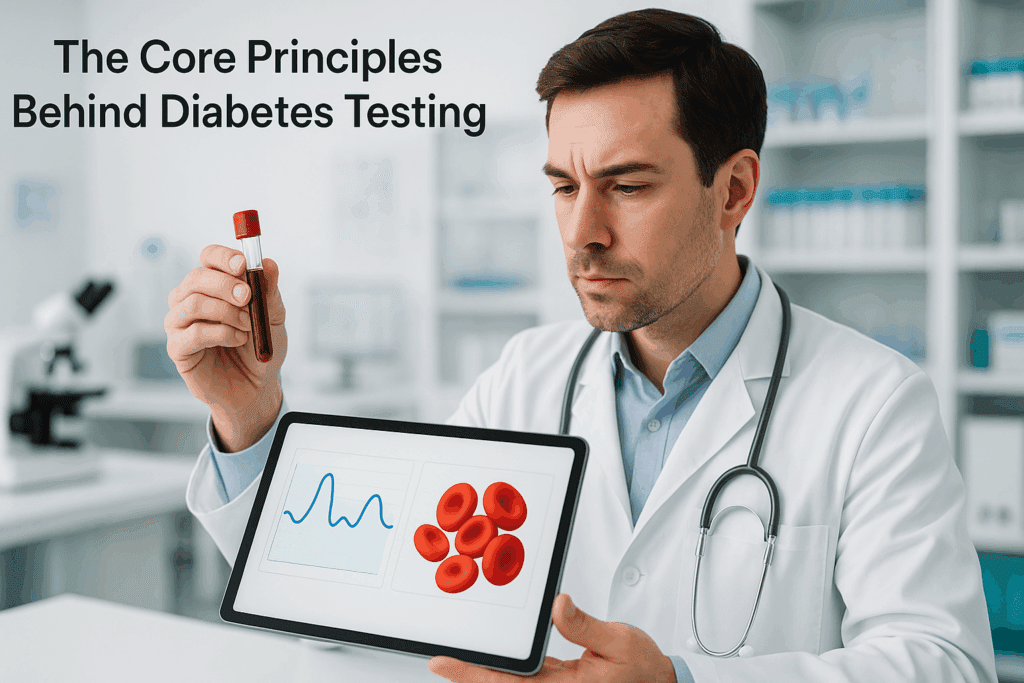
The Core Principles Behind Diabetes Testing
At the heart of all diabetes testing lies a single goal: identifying abnormal glucose metabolism before complications arise. While the symptoms of diabetes — such as excessive thirst, frequent urination, and unexplained weight loss — often signal late-stage progression, laboratory tests allow for earlier, often asymptomatic diagnosis. The most commonly employed diabetes tests include fasting plasma glucose (FPG), oral glucose tolerance test (OGTT), and glycated hemoglobin (HbA1c). Each provides a distinct window into the body’s glycemic control.
The A1C test, for instance, is frequently used to evaluate diabetes glucose levels over the past two to three months. This test measures the percentage of hemoglobin proteins in the blood that are coated with sugar, or glycated. Unlike a one-time glucose reading, A1C reflects chronic exposure to high blood glucose. A value of 6.5% or higher typically confirms diabetes. However, understanding what A1C is considered diabetic depends not only on absolute values but also on individual patient factors such as age, comorbidities, and medication use.
What makes modern diabetes testing revolutionary is its move toward context-aware diagnostics. Rather than relying on a single data point, clinicians now consider trends in diabetic blood sugar levels, time-in-range measurements from continuous glucose monitoring, and insulin resistance patterns. These factors enrich our interpretation of a patient’s diabetes diagnosis, offering a personalized, data-driven view of health.
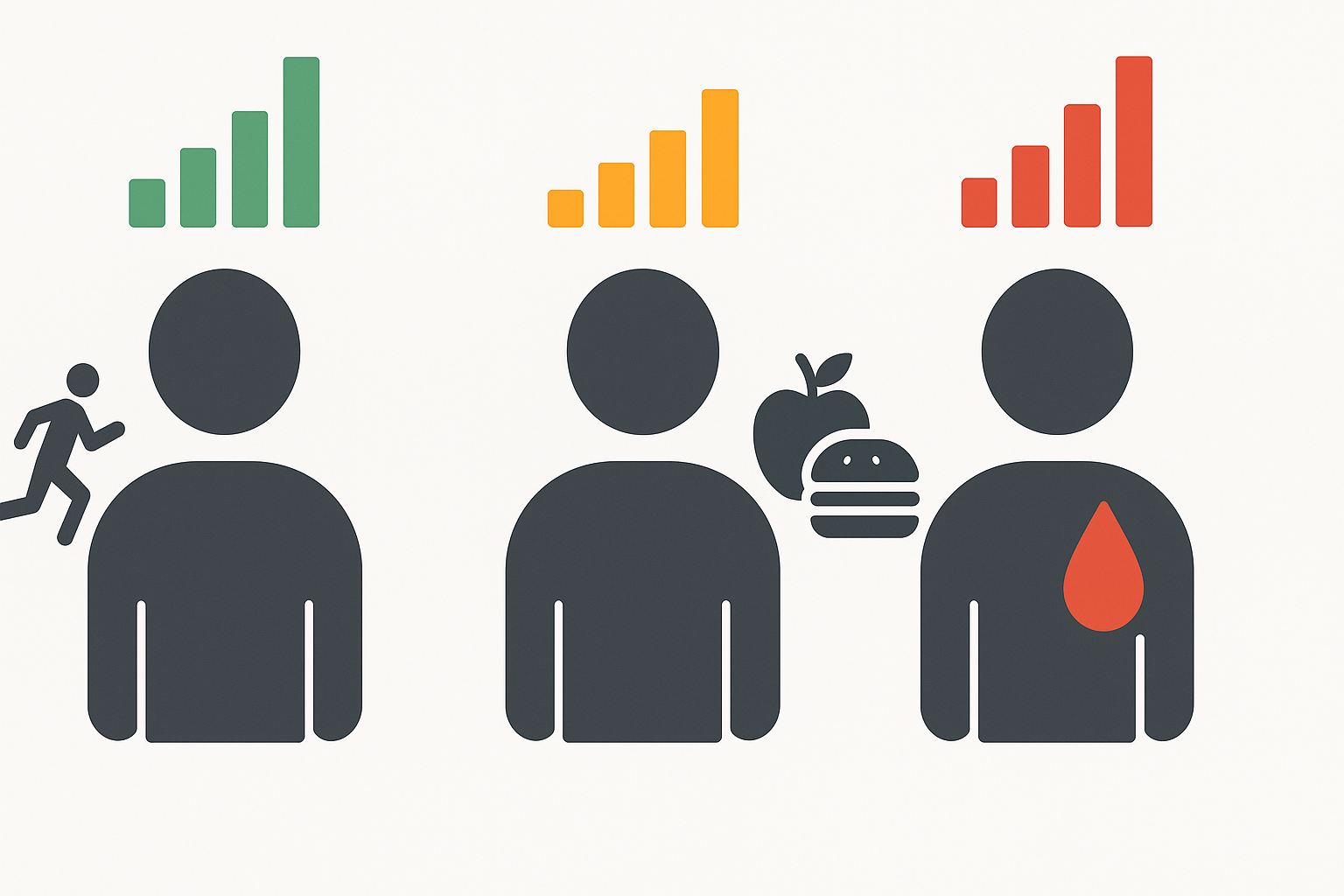
How Lab Tests Define Blood Sugar Norms and Diabetes Thresholds
Lab result interpretation for diabetes mellitus is grounded in decades of epidemiological research. Still, as our understanding of metabolic disorders grows, so too does our ability to refine these thresholds. Today, clinicians interpret test results against clearly defined ranges that separate normal, prediabetic, and diabetic states. For example, fasting glucose levels below 100 mg/dL are considered normal, while values from 100 to 125 mg/dL suggest prediabetes. Anything above 126 mg/dL on two separate occasions typically results in a diabetes diagnosis.
However, assessing diabetes blood sugar numbers requires more nuance. Type 2 diabetes blood sugar levels, especially, can fluctuate based on stress, hormonal shifts, and lifestyle variables. Thus, doctors often recommend a combination of fasting glucose and A1C testing to improve diagnostic accuracy. In recent years, technological tools such as CGMs (continuous glucose monitors) have provided deeper insight into blood sugar fluctuations. These tools help determine what is a good blood sugar level for a diabetic across the day, including after meals and during sleep.
Understanding the sugar range for a diabetic also helps guide treatment. For most nonpregnant adults with type 2 diabetes, pre-meal glucose should range from 80 to 130 mg/dL, while post-meal levels should remain under 180 mg/dL. Yet lab assessments do more than quantify sugar; they contextualize risk. For example, elevated blood diabetes level readings in combination with high triglycerides or liver enzymes may point toward underlying insulin resistance or metabolic syndrome, shaping a broader care plan.
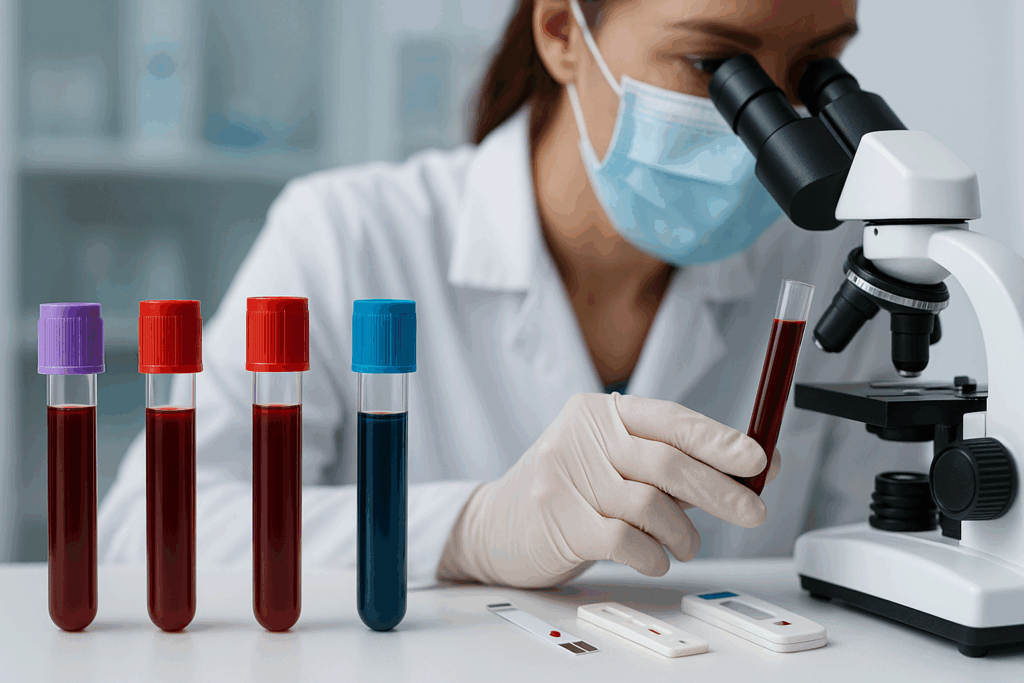
A1C and Beyond: The Expanding Frontier of Diabetes Biomarkers
Although the A1C test is a cornerstone of modern diabetes diagnosis, its limitations have spurred the exploration of complementary biomarkers. Certain conditions, like anemia or recent blood transfusions, can interfere with A1C accuracy. In response, researchers have examined alternate markers such as fructosamine, glycated albumin, and 1,5-anhydroglucitol, which may offer more reliable data under specific circumstances.
These novel markers allow for improved evaluation of diabetes glucose levels and may be particularly valuable in populations where A1C is less reliable. Importantly, they also support dynamic testing strategies for patients undergoing significant lifestyle or medication changes. When monitoring type 2 diabetes blood sugar levels in patients with rapid fluctuations, shorter-term markers like fructosamine, which reflects glycemia over two to three weeks, offer faster feedback.
The growing ability to test for diabetes using a variety of markers enables a more flexible and individualized diagnostic framework. Understanding how to test if you have diabetes is no longer confined to one method. Instead, it involves a constellation of tests tailored to each patient’s physiology, history, and risk profile. This shift aligns with the broader goals of precision medicine, where one-size-fits-all approaches give way to bespoke healthcare strategies.
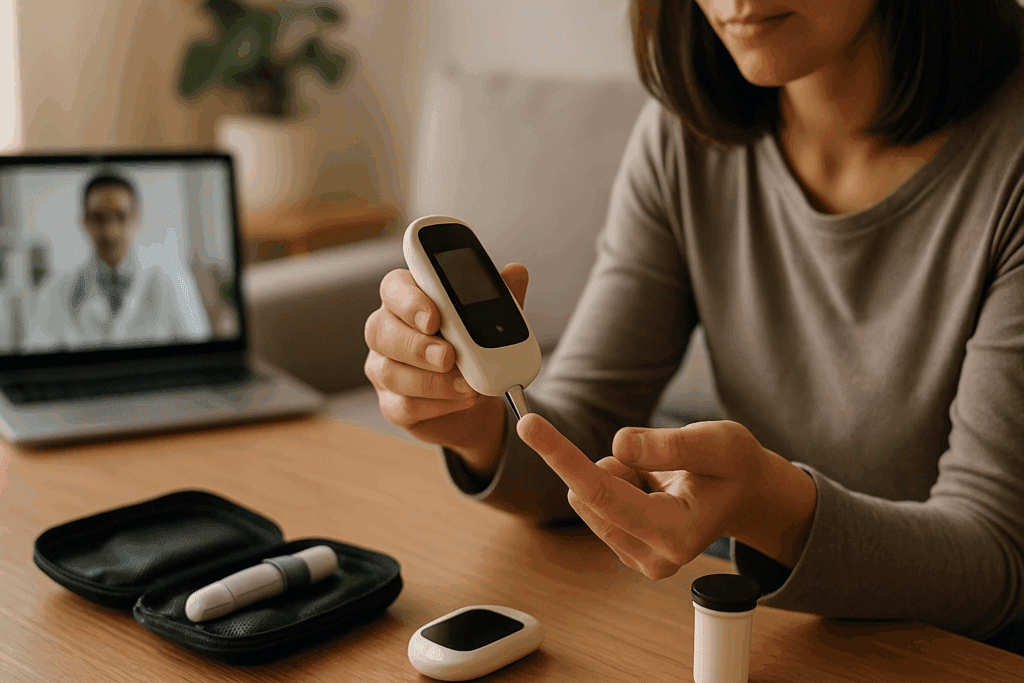
How Do You Get Tested for Diabetes Today? The Expanding Toolkit
The question of how do doctors test for diabetes today is met with a far more sophisticated answer than even a decade ago. Beyond traditional lab draws, patients can now access home testing kits, digital glucose meters, and wearable CGMs. For those wondering how can I test for diabetes without waiting weeks for a doctor’s appointment, pharmacy-based testing services and telemedicine consultations offer rapid alternatives.
Self-monitoring tools are especially valuable for those with risk factors but no formal diagnosis. Understanding how to check for diabetes at home can empower early intervention. Finger-stick glucose monitors and A1C test kits offer preliminary insights that, while not diagnostic on their own, can prompt further clinical evaluation. Still, all positive findings must eventually be confirmed through laboratory diagnostics.
Notably, there has also been a democratization of testing access. As public health campaigns educate people about how to test if you have diabetes, more individuals from underserved communities are able to engage with preventive care. Programs that offer free or subsidized testing make it easier for at-risk populations to understand what test determines diabetes and act before complications occur. This inclusive approach ensures that diabetes diagnosis does not remain the privilege of the few but becomes a universal right.
Interpreting Blood Sugar Readings for Type 2 Diabetes
One of the most critical steps following any diabetes test is interpreting the results in a clinically meaningful way. Blood sugar readings for type 2 diabetes are not static numbers; they represent a dynamic interaction of metabolism, lifestyle, and treatment efficacy. Understanding how can you be diagnosed with diabetes based on these numbers involves analyzing trends over time and correlating them with symptoms and risk factors.
For instance, a patient may present with fasting glucose values slightly above 126 mg/dL on multiple occasions but an A1C below the 6.5% diabetes threshold. In such cases, clinicians must weigh the possibility of early-stage diabetes, lab variation, and other contributing factors. This nuanced reading of diabetes blood sugar numbers illustrates the importance of follow-up testing and patient-specific context.
Moreover, clinicians must determine what sugar level is diabetic not just for diagnosis, but also for treatment. Personalized targets often vary based on age, cardiovascular risk, and duration of diabetes. For a young adult with newly diagnosed diabetes and no complications, tighter glycemic control may be appropriate. In contrast, for an older adult with comorbidities, a slightly higher target may reduce the risk of hypoglycemia. This adaptability ensures that blood sugar goals align with the patient’s holistic health needs.
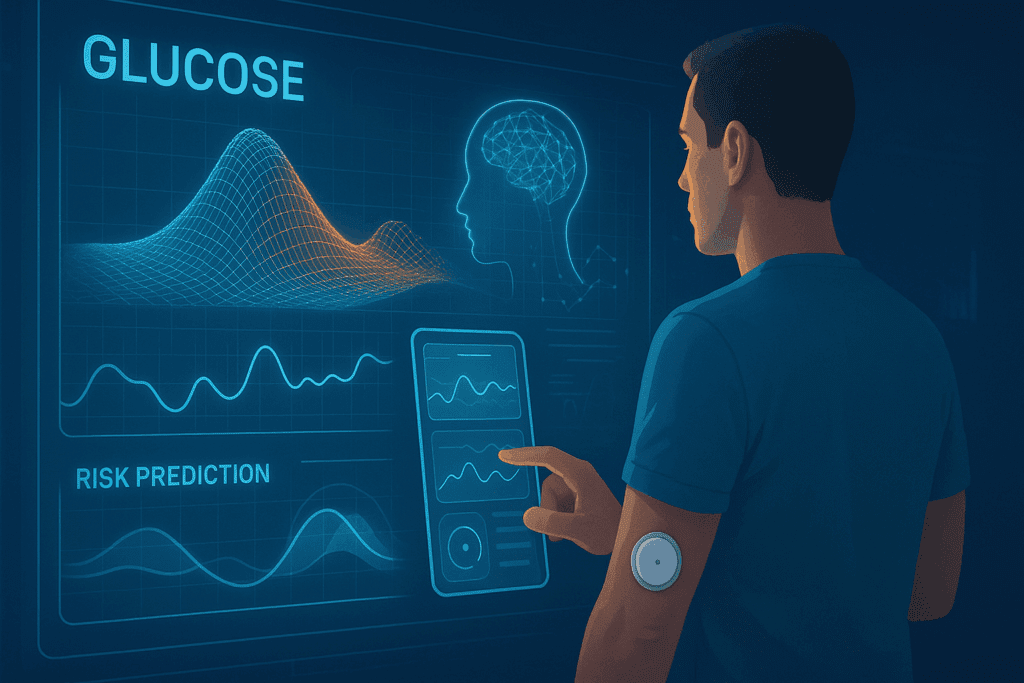
Emerging Technologies and Artificial Intelligence in Diabetes Detection
The future of how to diagnose diabetes is being shaped by artificial intelligence, wearable sensors, and integrated health platforms. AI-powered algorithms now analyze patterns in continuous glucose monitoring data, lab results, and lifestyle inputs to forecast diabetes risk with impressive accuracy. These systems don’t just track diabetic blood sugar levels; they predict trends, offering both patients and clinicians an anticipatory edge.
Wearable biosensors that track sweat glucose, noninvasive infrared monitors, and smart contact lenses are on the horizon, further expanding how can I check for diabetes with minimal disruption to daily life. These devices promise to reduce testing burden while increasing frequency and granularity of measurements. Such innovation also addresses the emotional fatigue that often accompanies chronic testing.
At the system level, machine learning models are helping healthcare providers identify individuals at high risk based on electronic health records, even before symptoms manifest. These predictive tools are transforming what test determines diabetes from a static snapshot to a real-time, dynamic risk model. While not a replacement for conventional diagnostics, they act as a critical first filter, ensuring timely follow-up.
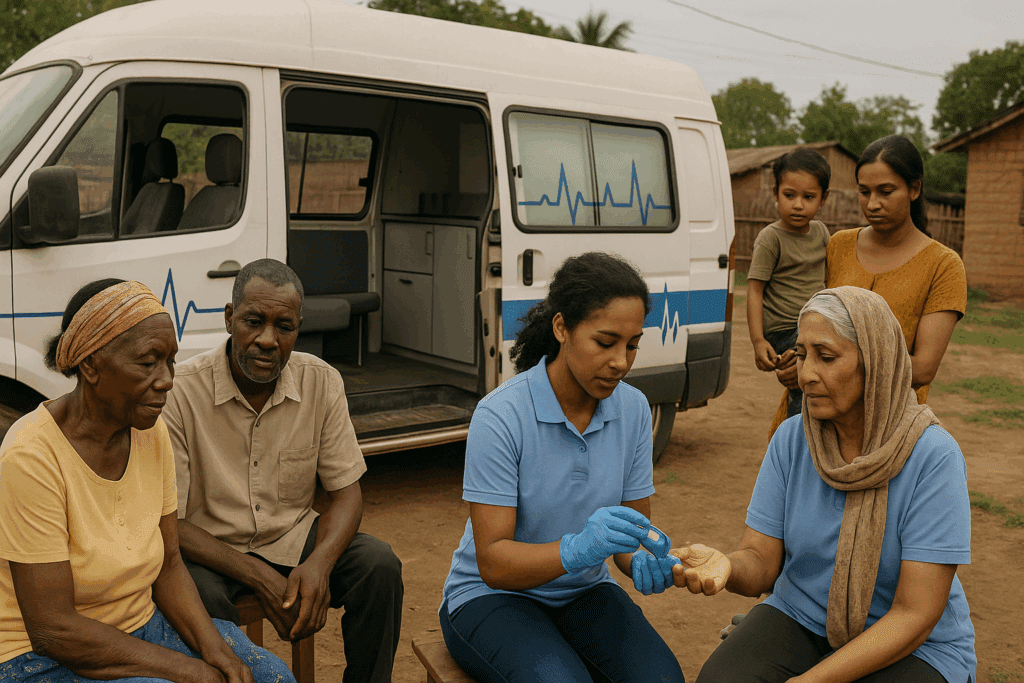
Bridging Gaps in Access and Awareness: Global Implications
As diagnostic capabilities evolve, ensuring equitable access becomes paramount. In many low- and middle-income countries, basic tests for diabetes 2 remain underutilized due to cost, infrastructure, or educational barriers. Bridging this gap requires more than technology; it demands policy, outreach, and a rethinking of healthcare delivery.
Educational campaigns that teach individuals how to test if u have diabetes are helping reduce stigma and increase uptake of screening. These efforts emphasize that a diabetes diagnosis is not a personal failure but a clinical opportunity to intervene. For communities historically underserved by traditional healthcare models, mobile clinics and community health workers serve as essential conduits for testing and support.
Pharmaceutical and tech companies also play a role by creating affordable, durable testing tools suited to diverse environments. Whether it’s a solar-powered glucose meter or a smartphone app that explains how to test if you have diabetes in local languages, innovation must meet people where they are. Global breakthroughs in testing mean little unless they translate into improved health equity on the ground.
Frequently Asked Questions (FAQ): Breakthroughs in Diabetes Testing and Diagnosis
1. How do you get tested for diabetes if you have no symptoms?
Getting a diabetes test even without obvious symptoms is increasingly common, especially if you have risk factors such as family history, obesity, or a sedentary lifestyle. In these cases, doctors often begin with a basic fasting blood glucose test or a diabetes A1C test to assess long-term blood sugar control. You can also undergo a random plasma glucose test or an oral glucose tolerance test depending on your health profile. Many people ask how to test if you have diabetes without going to a clinic, and the good news is that pharmacy-based screenings and FDA-approved home A1C kits are available. However, for a definitive diabetes diagnosis, lab-confirmed results are necessary, and follow-up testing should be coordinated through a healthcare provider.
2. What does a diabetes A1C test reveal that other tests might miss?
Unlike single-point glucose readings, the diabetes A1C test provides a broader picture by showing your average diabetes glucose levels over the past two to three months. This is particularly valuable for detecting chronically high blood diabetes levels that might be missed in a one-time fasting test. It also helps determine what A1C is considered diabetic by establishing a reliable baseline, especially in patients with fluctuating daily readings. A1C results above 6.5% typically indicate diabetes, but some individuals hover near that threshold for months before receiving a confirmed diagnosis. Understanding how is diabetes diagnosed in these nuanced scenarios often involves interpreting A1C in conjunction with other markers like fructosamine or continuous glucose monitoring data.
3. How do doctors test for diabetes in children or adolescents differently from adults?
Pediatric testing requires a slightly different approach because type 1 diabetes, which is more common in children, has different onset characteristics compared to type 2. Pediatricians might order antibody testing alongside standard tests for diabetes glucose levels to determine autoimmune activity. In teens with obesity or signs of insulin resistance, a diabetes A1C test is frequently used to screen for early-onset type 2 diabetes. Pediatric guidelines also consider growth patterns, puberty, and nutritional status when interpreting diabetes blood sugar numbers. Parents often wonder how can I test for diabetes in my child at home, but any unusual blood sugar readings should prompt immediate professional evaluation due to the rapid progression of symptoms in young people.
4. Can stress or illness affect diabetes blood sugar numbers enough to impact diagnosis?
Yes, both acute illness and psychological stress can cause temporary elevations in blood diabetes levels, which may complicate how to diagnose diabetes accurately. Stress hormones like cortisol raise glucose levels by promoting insulin resistance, potentially skewing fasting or random blood sugar readings. This is why a single elevated reading doesn’t always result in a diabetes diagnosis without confirmation through repeat testing or diabetes A1C values. Clinicians often take recent life events into account when deciding how to interpret lab result data. If you’re wondering what test determines diabetes with the least variability, the A1C test is generally more stable since it reflects long-term trends rather than short-term fluctuations.
5. Are there unique challenges in interpreting blood sugar readings for type 2 diabetes in older adults?
Yes, older adults often experience different glycemic patterns due to factors such as declining kidney function, medication use, or coexisting illnesses. For this demographic, type 2 diabetes blood sugar levels may appear deceptively normal during fasting but spike after meals, making postprandial testing essential. Lab result interpretation for diabetes mellitus in seniors must also account for cognitive status, as hypoglycemia can increase fall risk and dementia progression. Understanding what is a good blood sugar level for a diabetic in this age group involves personalized targets that prioritize safety over tight control. Clinicians balance these risks when determining how is diabetes diagnosed in elderly populations, sometimes using more lenient thresholds.
6. How do wearable devices and digital apps help monitor diabetes glucose levels more effectively?
Modern technology has dramatically improved how to check for diabetes and monitor ongoing control. Wearable continuous glucose monitors (CGMs) offer real-time insights into diabetic blood sugar levels, reducing reliance on finger-stick testing. Paired with apps that track nutrition, exercise, and medication adherence, they provide a more holistic view of blood sugar values for diabetes management. Some devices now alert users if their type 2 diabetes glucose levels trend dangerously high or low, prompting earlier medical intervention. For those questioning how to test if you have diabetes with minimal discomfort, these devices offer a non-invasive alternative that can detect abnormal trends before symptoms appear. They also assist clinicians in fine-tuning medication dosages and dietary plans.
7. What role does genetics play in how can you be diagnosed with diabetes?
Genetics significantly influence both the risk of developing diabetes and the way diabetes blood sugar numbers behave. Some individuals inherit genes that affect insulin production or receptor sensitivity, making it easier to develop type 2 diabetes even with a healthy lifestyle. For people with strong family histories, doctors may initiate screening earlier or interpret borderline readings more cautiously. Understanding how do you get tested for diabetes in a genetically at-risk population means considering additional diagnostic tools like fasting insulin, C-peptide, and HOMA-IR calculations. Genetic screening is not yet a routine part of how to test if u have diabetes, but it may become more common as precision medicine evolves.
8. Is it possible to have normal fasting glucose but still meet the criteria for a diabetes diagnosis?
Absolutely. Many individuals have normal fasting glucose but abnormal postprandial levels or elevated diabetes A1C scores. This condition, often referred to as “isolated postprandial hyperglycemia,” can still lead to complications despite appearing normal on a standard fasting diabetes test. For this reason, some endocrinologists recommend broader testing, including a full oral glucose tolerance test or a CGM trial. Lab result interpretation for diabetes mellitus is more accurate when it includes multiple measures of blood sugar fluctuations, not just static thresholds. Understanding what sugar level is diabetic in these borderline cases often requires a comprehensive approach.
9. How can I test for diabetes if I live in a remote or underserved area?
Accessing reliable testing in remote areas is increasingly possible thanks to telemedicine and mobile lab services. Many health departments offer mail-in A1C kits that allow individuals to check their diabetes blood sugar numbers from home. Some NGOs provide pop-up clinics that offer tests for diabetes 2 along with blood pressure and cholesterol checks. Understanding how to test if you have diabetes in such settings often involves partnerships between local pharmacies, online platforms, and regional health workers. With support, even individuals far from traditional clinics can obtain accurate blood sugar readings for type 2 diabetes and receive guidance on next steps.
10. What are some emerging trends in how doctors test for diabetes that may become standard in the future?
Emerging innovations are revolutionizing the way we approach diabetes diagnosis. Researchers are developing non-invasive tools like tear-based glucose sensors, breath analyzers, and even skin patches that measure diabetes glucose levels continuously. Artificial intelligence is also playing a larger role in how is diabetes diagnosed by analyzing massive datasets to identify at-risk individuals even before symptoms or elevated readings occur. These advancements could redefine what test determines diabetes and make early intervention more efficient. In the future, how to diagnose diabetes may include real-time risk scoring based on genetic, behavioral, and environmental factors—giving patients and clinicians a proactive advantage never before possible.
Conclusion: Unlocking the Future of Accurate Diabetes Testing and Diagnosis
The evolution of diabetes testing marks a turning point in chronic disease management, blending clinical rigor with patient-centered innovation. No longer limited to fasting blood draws or single-point glucose checks, the medical diagnosis of diabetes now spans a rich array of tools designed to reflect real-life glycemic patterns and individual variability. Understanding how is diabetes diagnosed today means recognizing the confluence of traditional lab testing, emerging biomarkers, and intelligent digital monitoring systems.
For patients navigating concerns about how can I test for diabetes or wondering what is the sugar range for a diabetic, modern healthcare offers more clarity than ever before. Accurate interpretation of blood sugar values for diabetes, supported by advancements in A1C testing and beyond, is empowering both clinicians and patients to act earlier, treat smarter, and live better.
In this new landscape, lab result interpretation for diabetes mellitus is not a static process but an ongoing dialogue between biology and behavior. As we continue to refine how to check for diabetes and personalize care pathways, the ultimate goal remains the same: to detect diabetes sooner, manage it more effectively, and ultimately, improve health outcomes across all populations. The breakthroughs unfolding today are not merely technological—they are transformational, paving the way for a future where timely, equitable, and precise diabetes diagnosis becomes a global standard.
Was this article helpful? Don’t let it stop with you. Share it right now with someone who needs to see it—whether it’s a friend, a colleague, or your whole network. And if staying ahead on this topic matters to you, subscribe to this publication for the most up-to-date information. You’ll get the latest insights delivered straight to you—no searching, no missing out.
Further Reading:
Classification and Diagnosis of Diabetes: Standards of Medical Care in Diabetes—2022
A1C: What It Is, Test, Levels & Chart
Disclaimer
The information contained in this article is provided for general informational purposes only and is not intended to serve as medical, legal, or professional advice. While MedNewsPedia strives to present accurate, up-to-date, and reliable content, no warranty or guarantee, expressed or implied, is made regarding the completeness, accuracy, or adequacy of the information provided. Readers are strongly advised to seek the guidance of a qualified healthcare provider or other relevant professionals before acting on any information contained in this article. MedNewsPedia, its authors, editors, and contributors expressly disclaim any liability for any damages, losses, or consequences arising directly or indirectly from the use, interpretation, or reliance on any information presented herein. The views and opinions expressed in this article are those of the author(s) and do not necessarily reflect the official policies or positions of MedNewsPedia.


